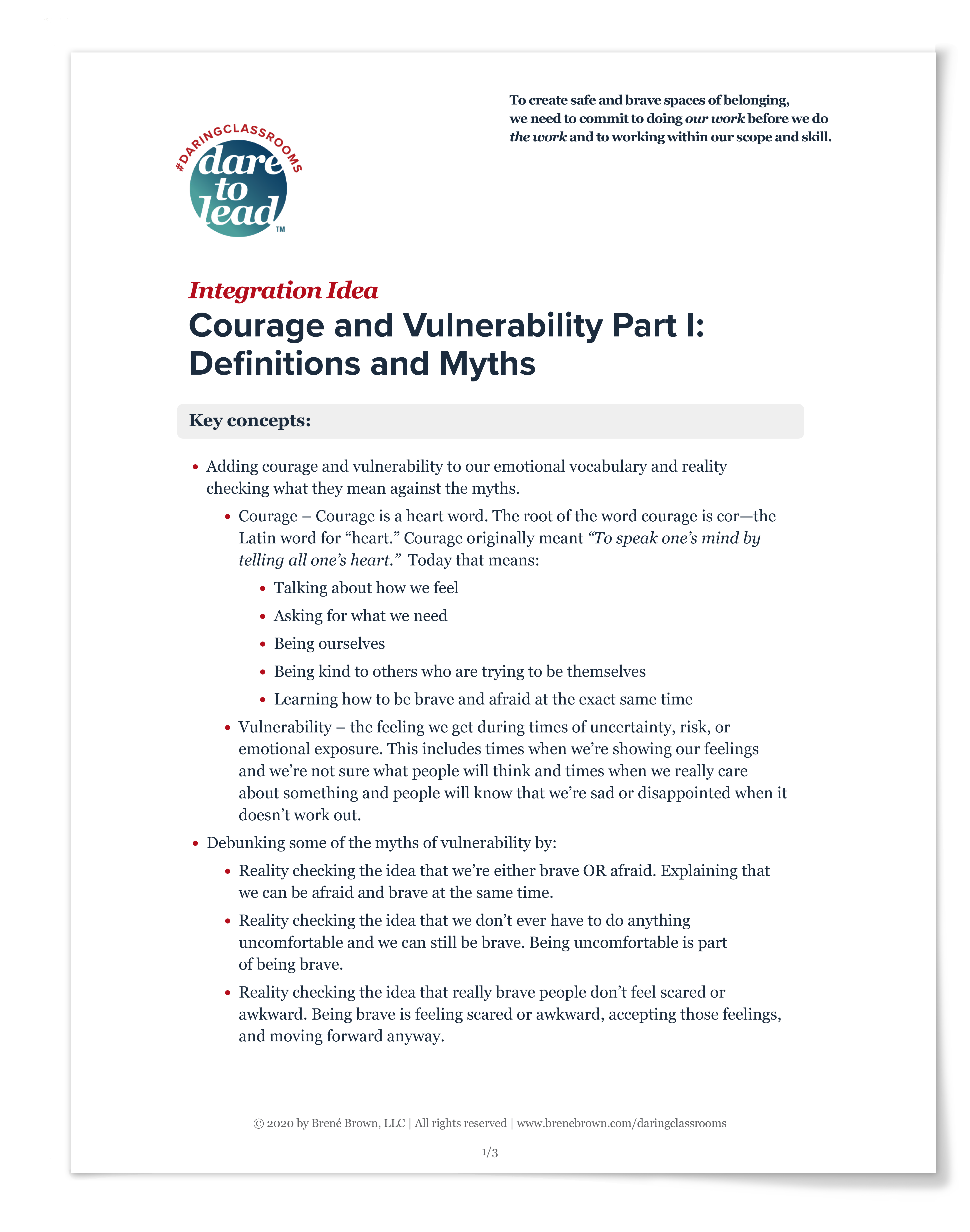
Courage and Vulnerability Part I: Definitions and Myths
Courage is a heart word. The root of the word is cor—the Latin word for “heart.” Courage originally meant “To speak one’s mind by telling all one’s heart.” Today that means:
- Talking about how we feel
- Asking for what we need
- Being ourselves
- Being kind to others who are trying to be themselves
- Learning how to be brave and afraid at the exact same time
Vulnerability is the feeling we get during times of uncertainty, risk, or emotional exposure. This includes times when we’re showing our feelings and we’re not sure what people will think and times when we really care about something and people will know that we’re sad or disappointed when it doesn’t work out.
This resource also helps to debunk some of the myths of vulnerability by:
- Reality checking the idea that we’re either brave OR afraid and explaining that we can be afraid and brave at the same time.
- Reality checking the idea that we don’t ever have to do anything uncomfortable and we can still be brave. Being uncomfortable is part of being brave.
- Reality checking the idea that really brave people don’t feel scared or awkward. Being brave is feeling scared or awkward, accepting those feelings, and moving forward anyway.
- Helping students understand that we don’t have to share everything with everyone. Being vulnerable doesn’t mean oversharing. Vulnerability minus boundaries is not vulnerability. We share with people we trust.
This resource is part of a collection of courage-building concepts and tools that can be integrated into the classroom. You can explore more of these resources here.